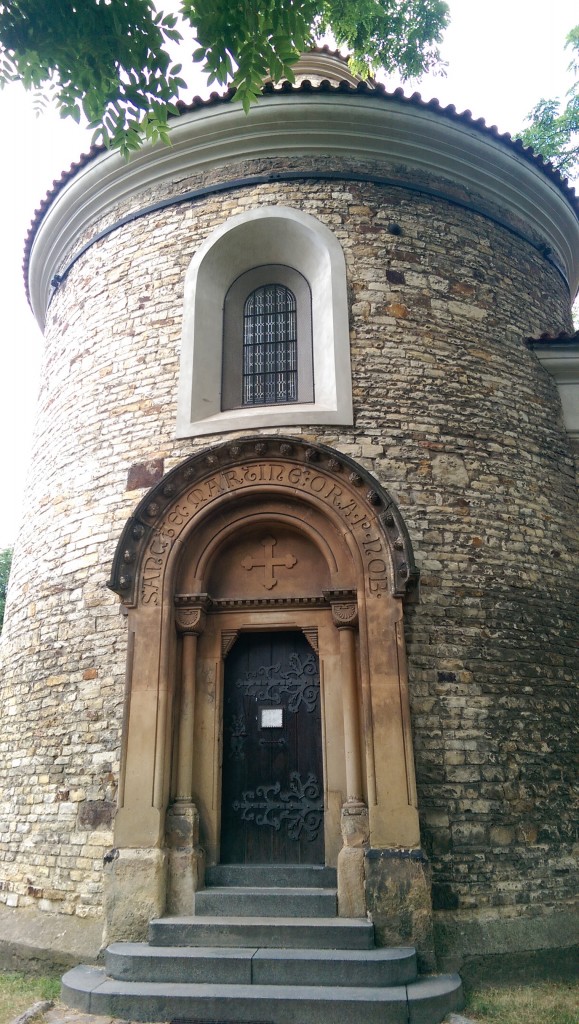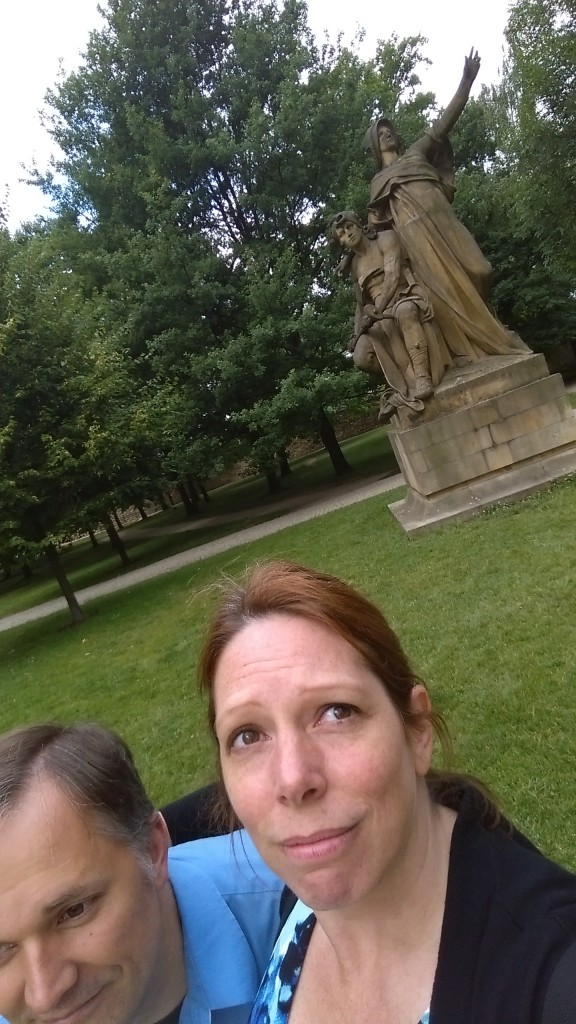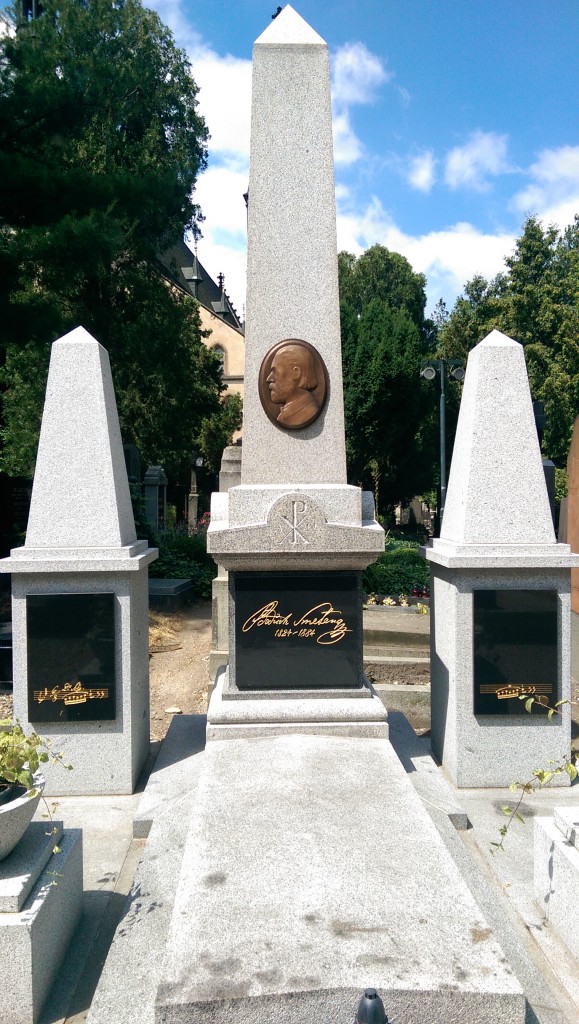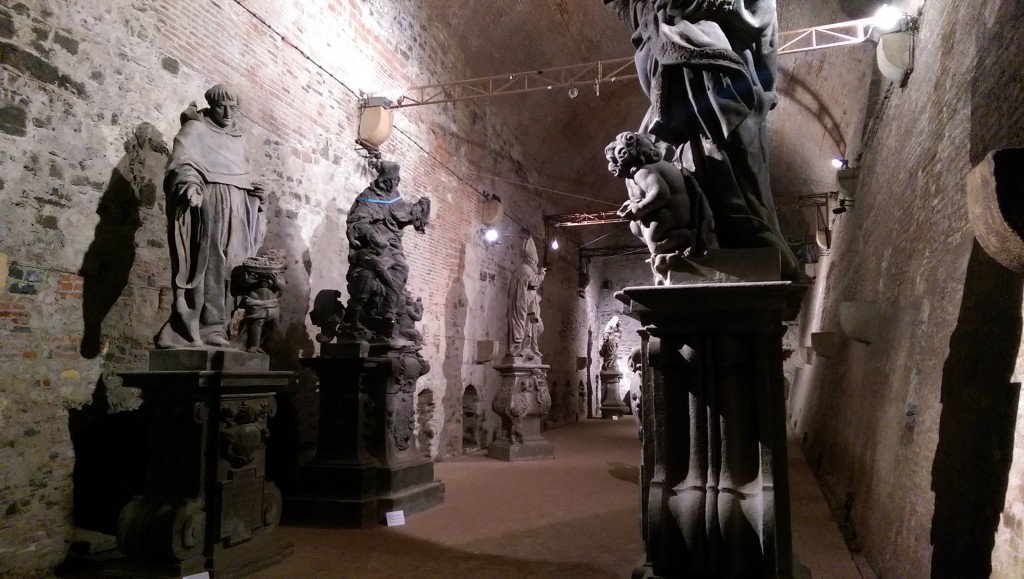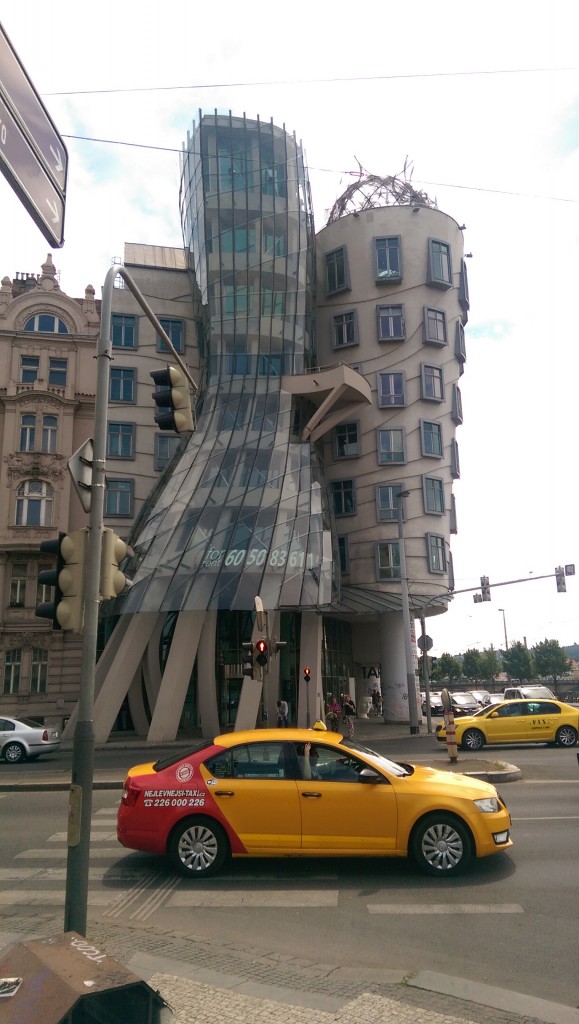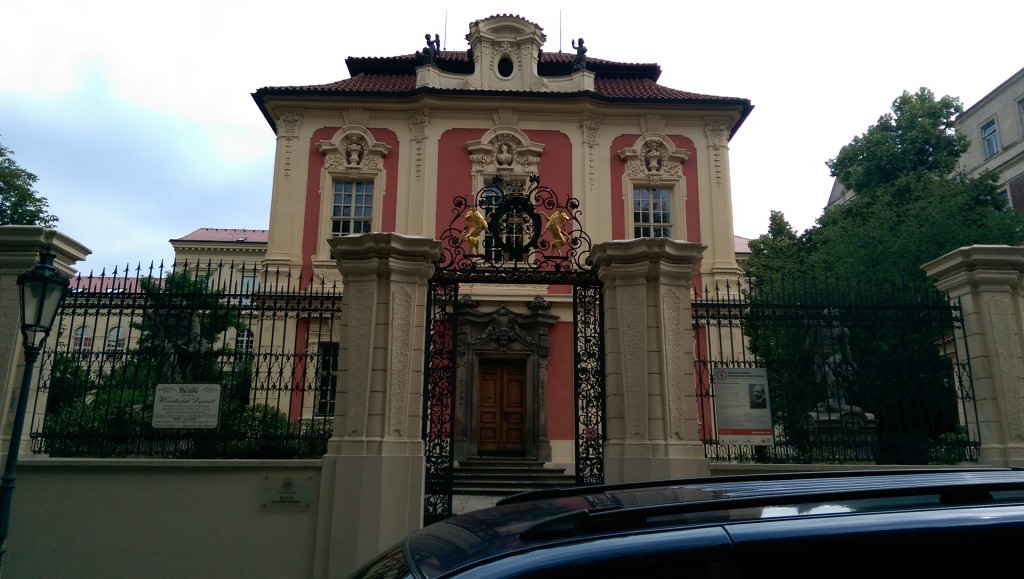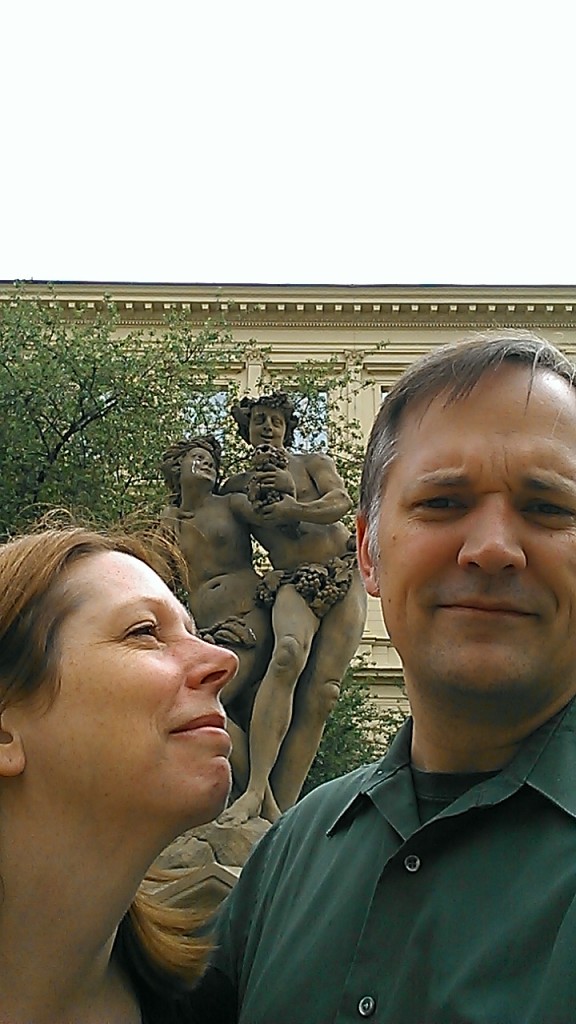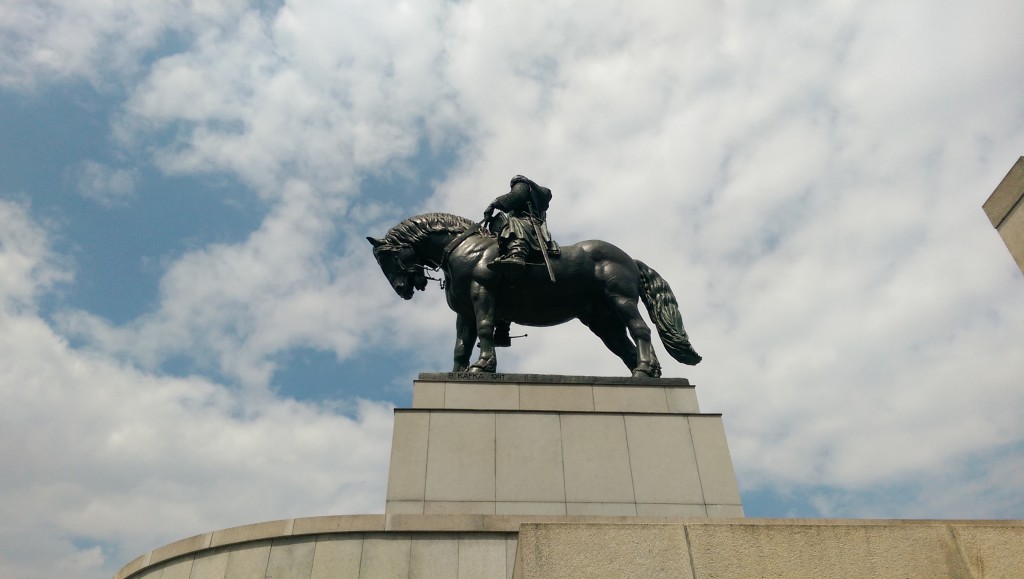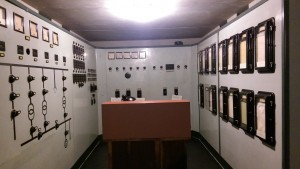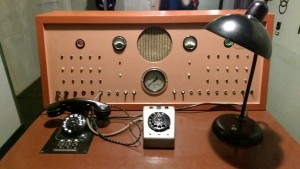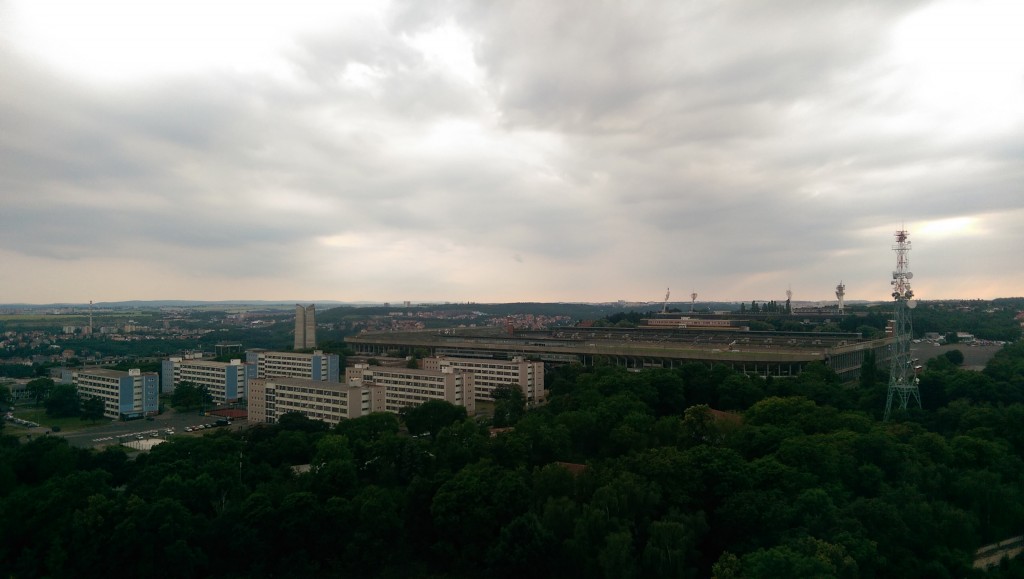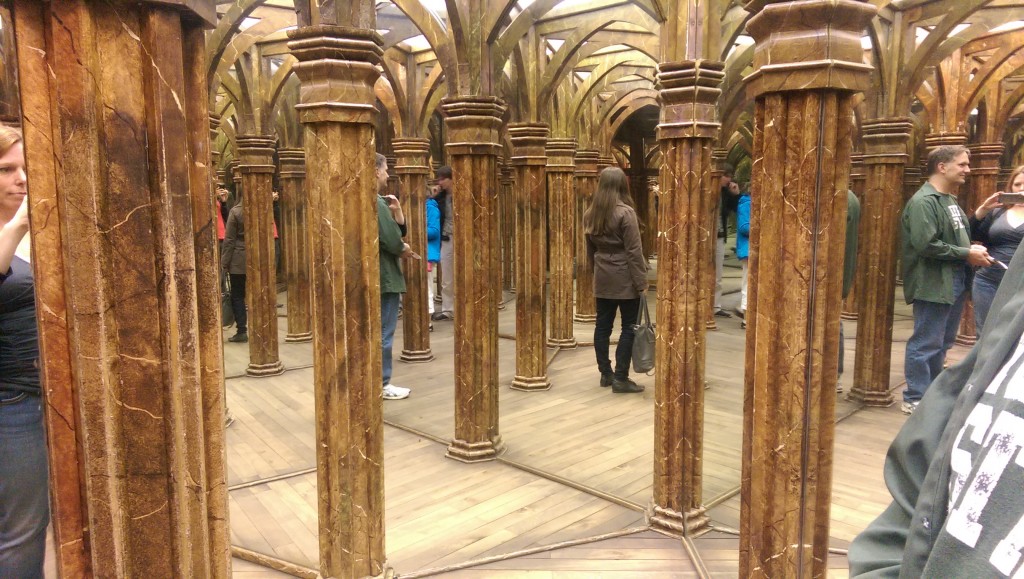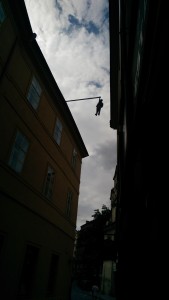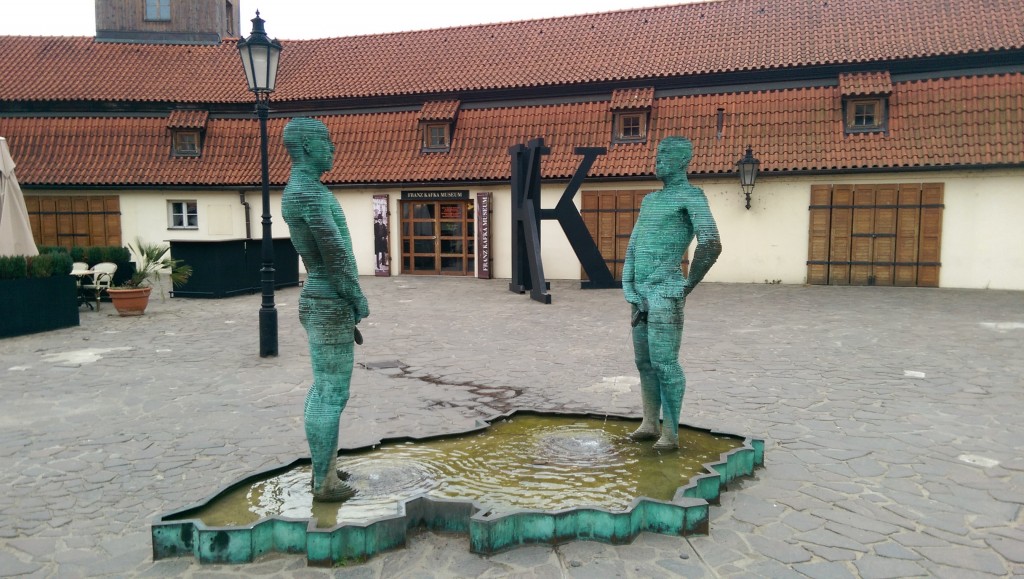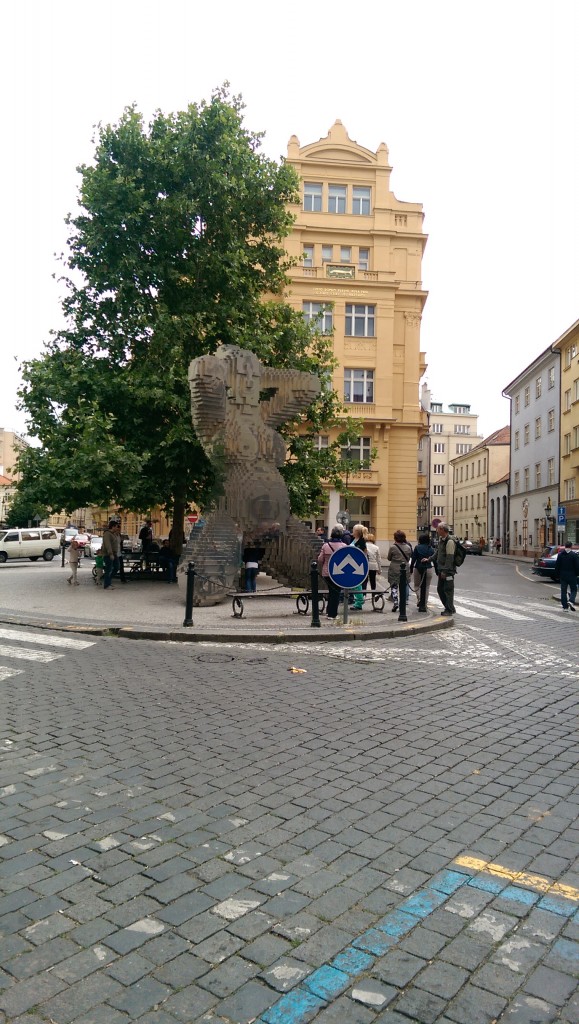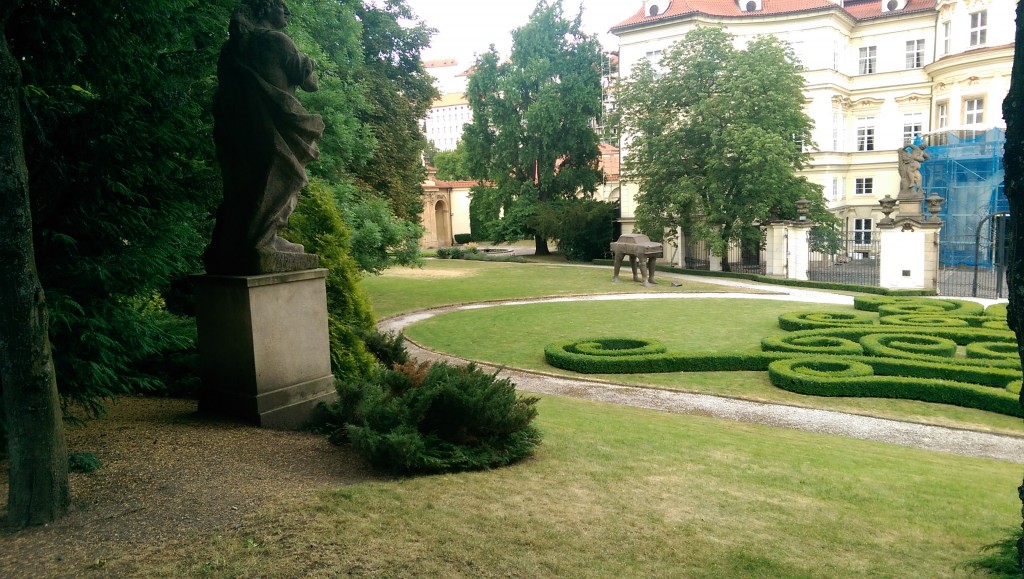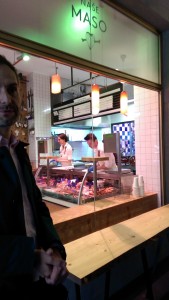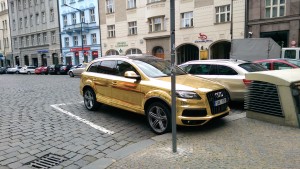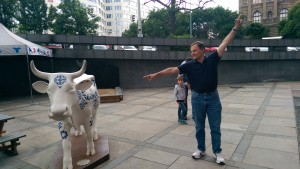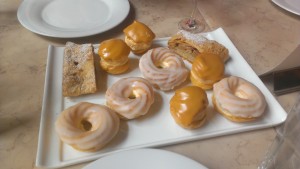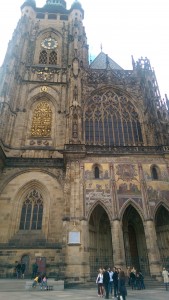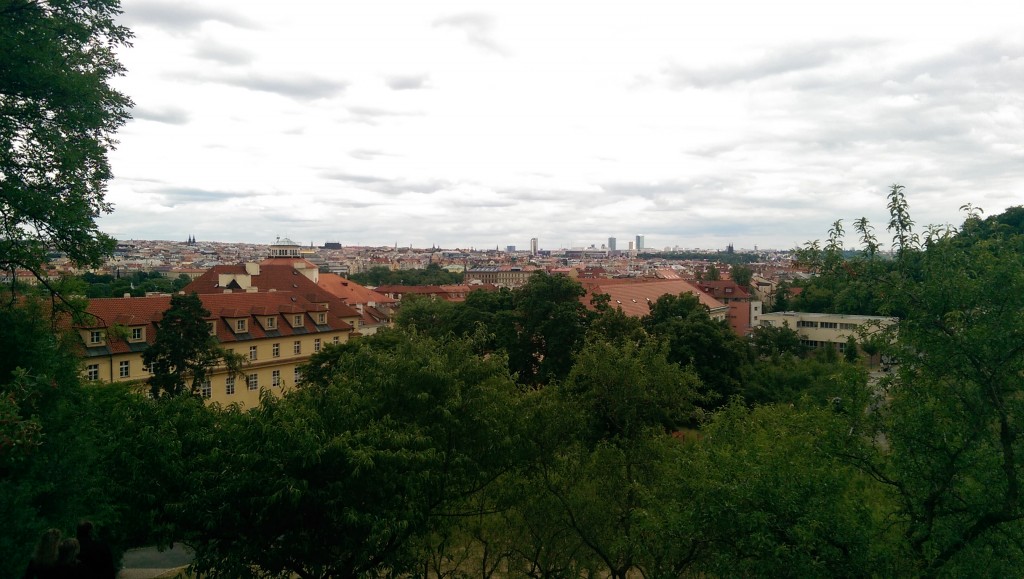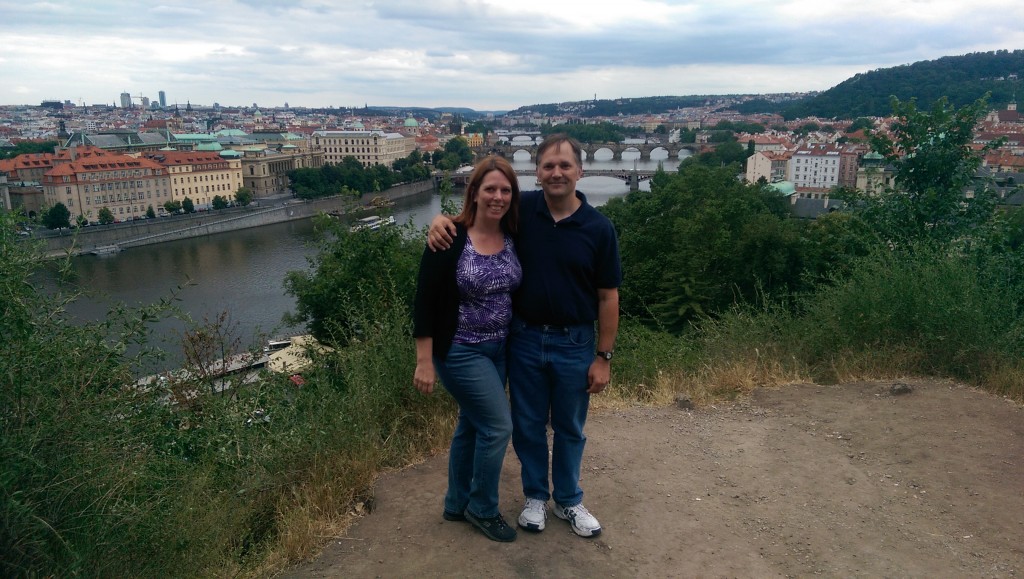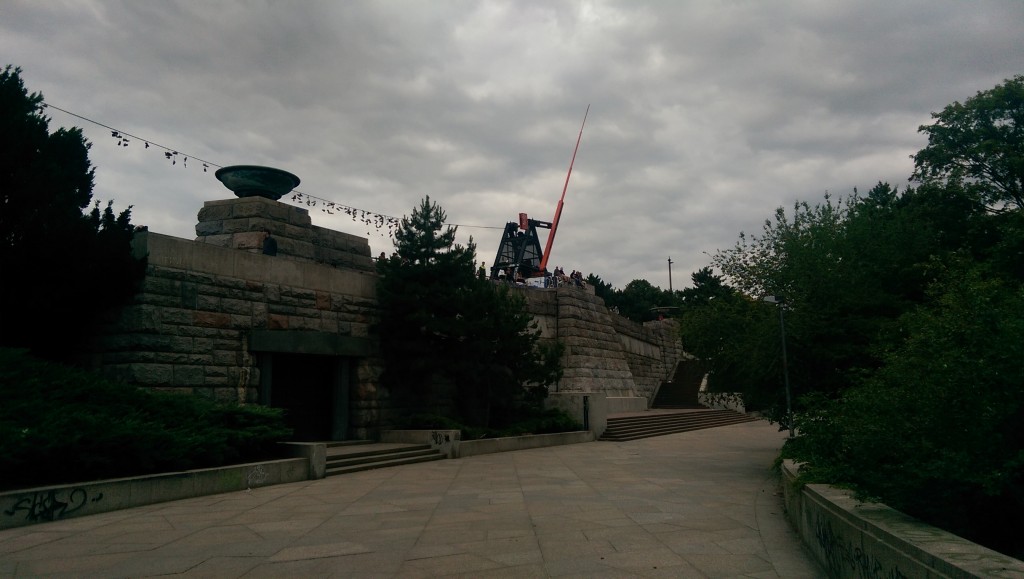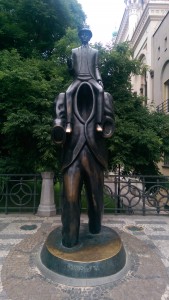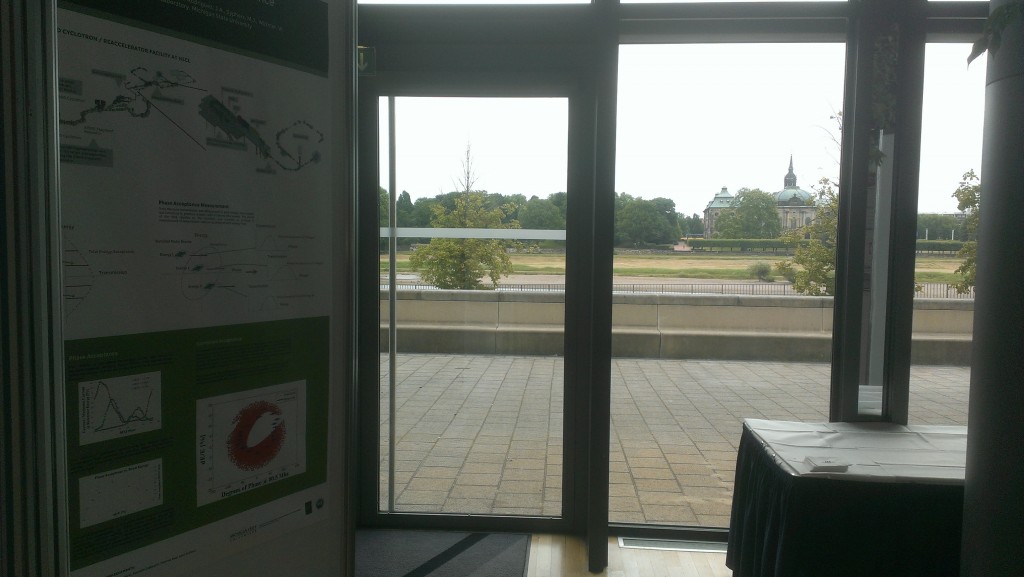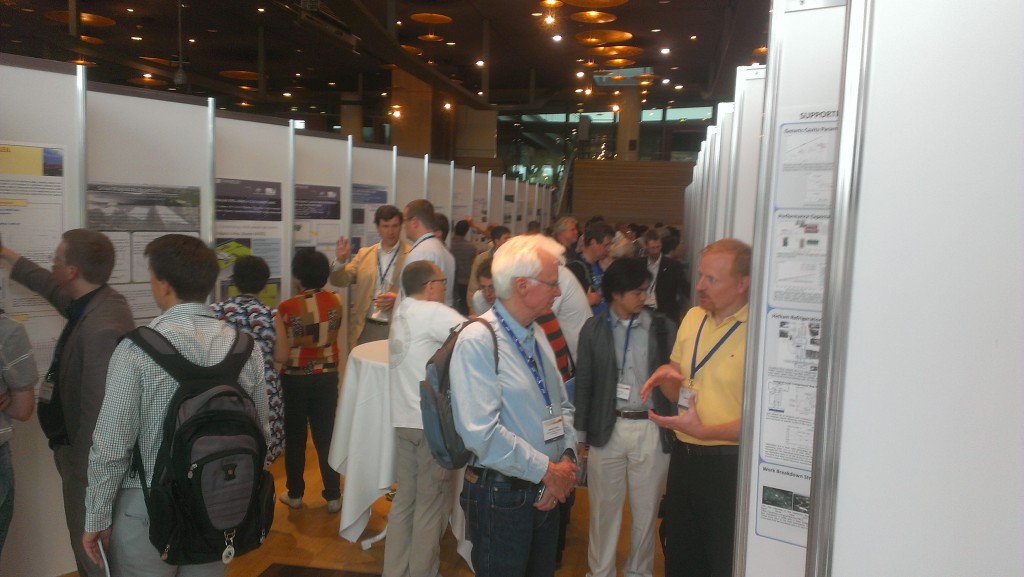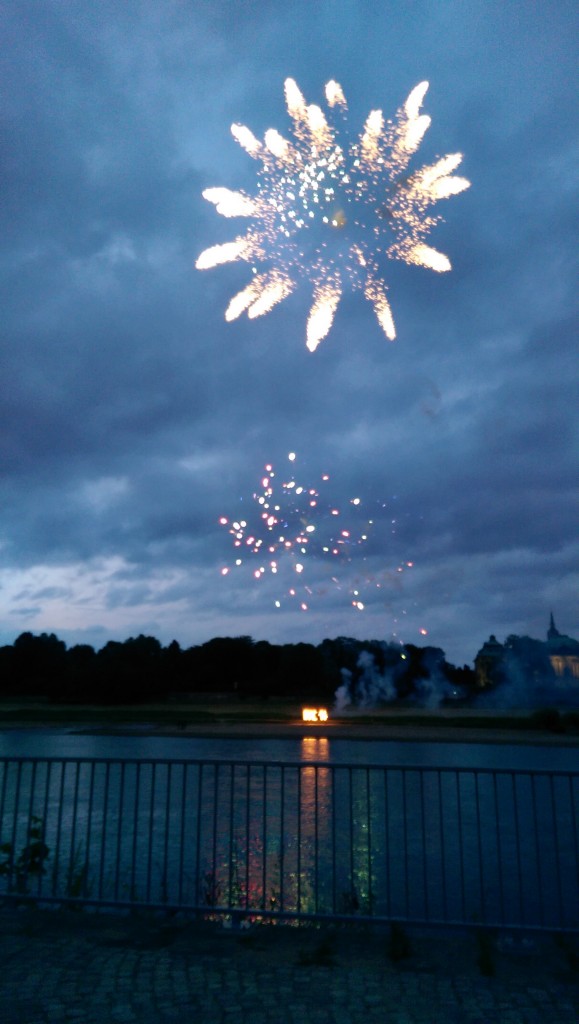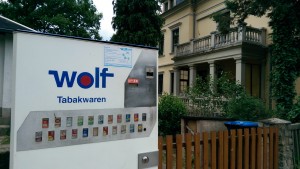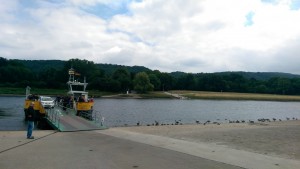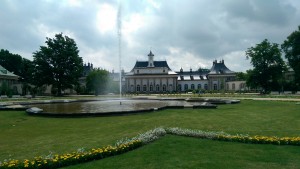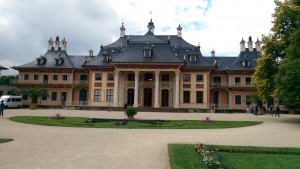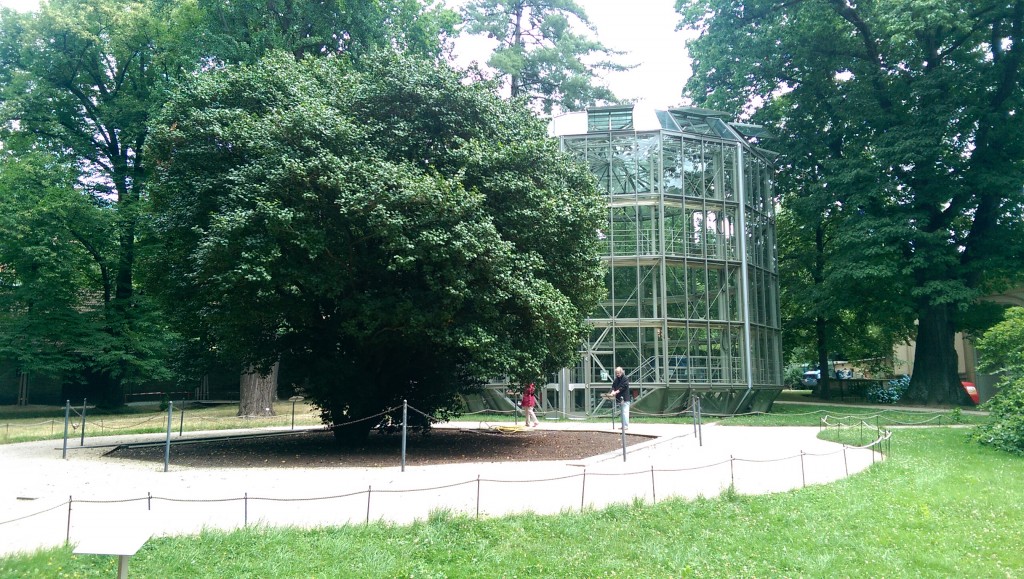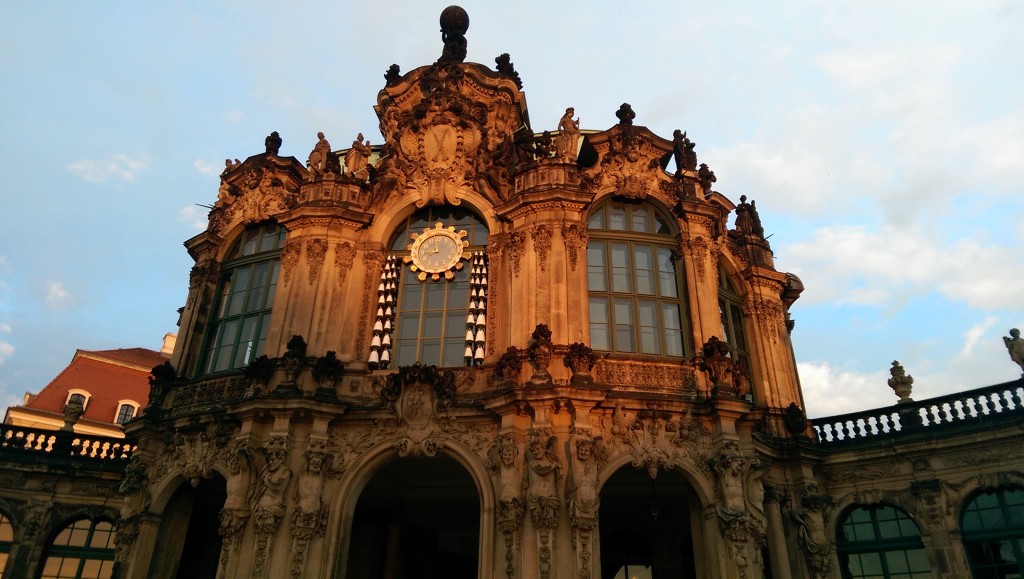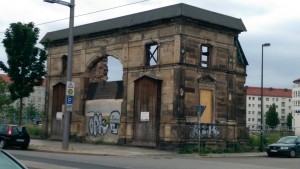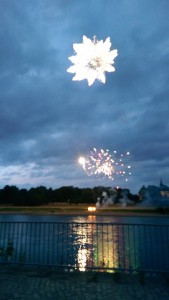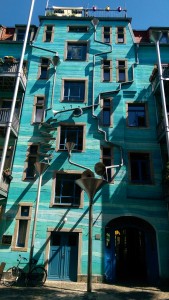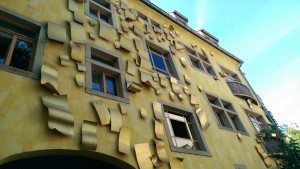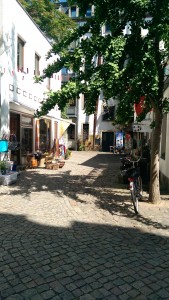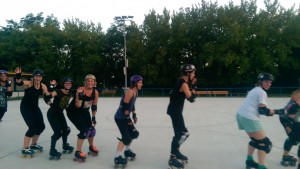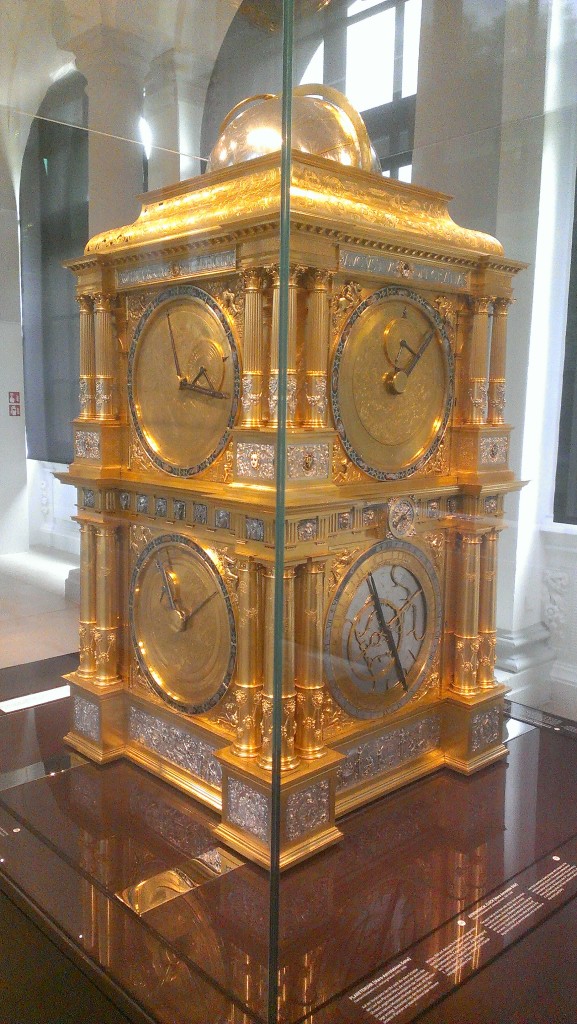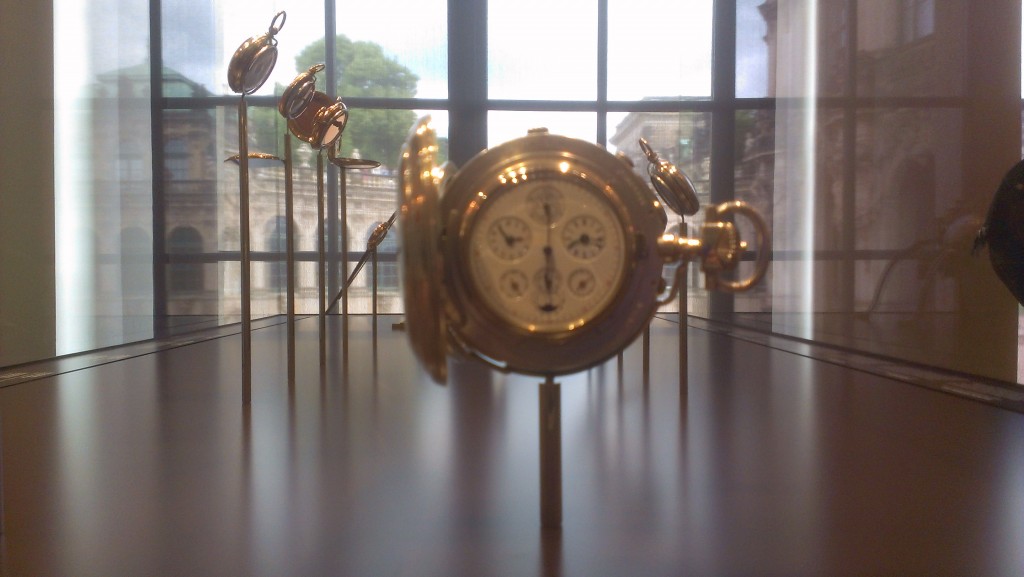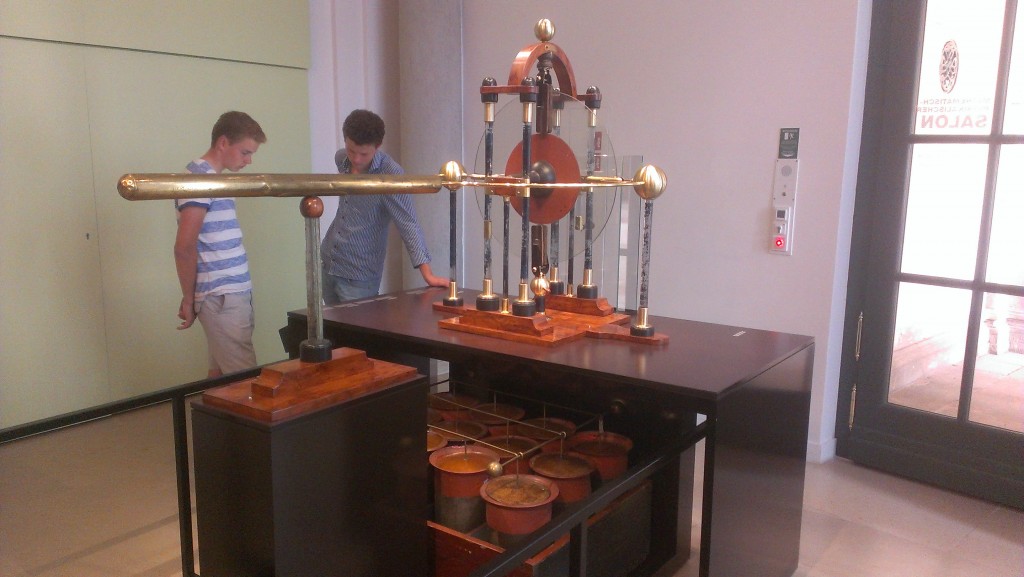It was the last day of our trip, and we had a carefully selected agenda of “Places That are Open on Mondays.” To be fair, these were places we actually wanted to go, we just timed them so we could visit the not-open-on-Mondays places on other days.
First up, Vyšehrad, the OTHER major castle in Prague, and home to a number of famous Czechs’ burial sites, as well as another random diacritical mark. Sadly, we don’t appear to have taken any good pictures of the OUTSIDE of the castle, since it’s rather far from downtown, so here’s the Wikipedia link for reference.
Vyšehrad has a long and complex history that we’re not going to into here, because you can just read the link, and that’s where I’d be cribbing it from anyway. But here’s a picture of a building with a cannonball stuck in the side, just to pique your interest. (Cannonball is just to the right of the top of the window.)
It’s quite a large area, and we decided to violate our usual habit of wandering around going “What the hell is that?” by buying a guidebook, and taking turns reading to each other out of it. This allowed us to replace the “What the hell is that?” habit with a new policy of reading a section of the guidebook and then wandering around going, “Where the hell IS that?” Also, here’s another “Leigh and Dan take a selfie with a statue that looks like it’s taking a selfie” (this TOTALLY needs to become a Tumblr):
In addition to the impressive cathedral, the most interesting part of visiting Vyšehrad is the cemetery, where a number of famous Czechs are buried. There’s Dvořák:
Smetana:
And lots of other presumably famous people, none of whom we’d ever heard of. On our way out of the fortress, we discovered that we were just in time to take a scheduled tour of the casements. “That sounds like fun”, we thought. “By the way, what are casements?”

Oh. How’s that fear of dark enclosed spaces working out for you there? [Note from Leigh: This was the lit portion of the walk. The rest was pretty much pitch dark.] Seriously, you couldn’t see the floor, and the walk was about a quarter of the mile from the gate to the gallery and back. It was at least nice and cool. The walk did turn out to be worth it, however – the gallery at the end of the walk contains the originals of some of the sculptures from the Charles Bridge. (Did we mention that the ones out there now are almost entirely copies?) This was a quite impressive and imposing way to view them.
Just try not to think about “Blink” while you’re in here. These casements apparently used to hold ammunition and supplies for whoever was currently in control of the castle complex.
The rest of the day was fun, but not terribly photogenic. We did visit a building which was deliberately designed to look like Ginger Rodgers and Fred Astaire dancing: (You can decide for yourself how successful you think the architects were.)
After this, we went to a modern art museum on the north of town, where they didn’t allow photography, so no pictures. It wasn’t really all that exciting a collection anyway, although there was a David Czerny on the roof. We decided to finish the day by using our transit pass to find a few more far-flung geocaches, and then headed back to Wenceslas square for a final walk though Old Town.
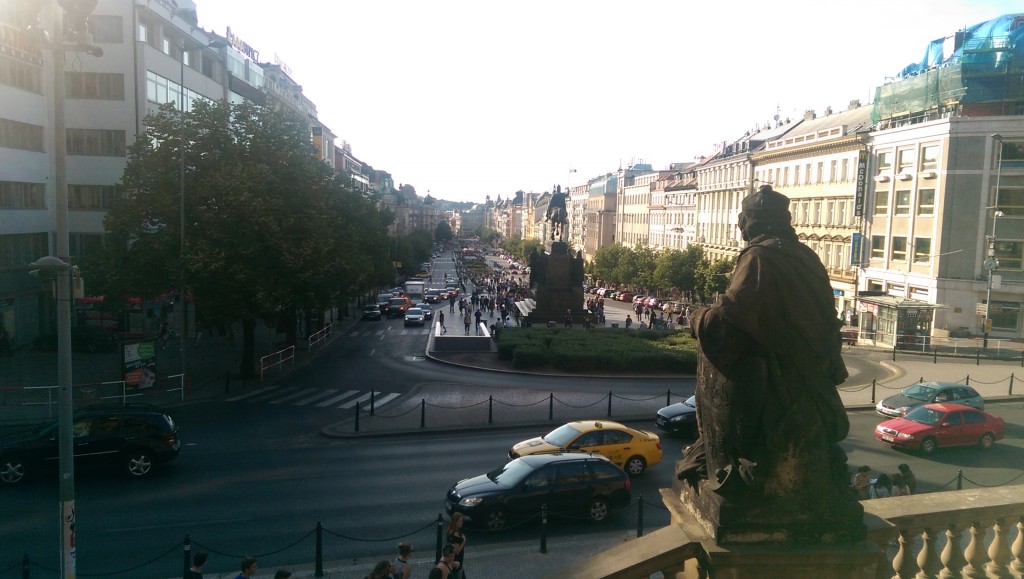
Since we had a very early flight the next morning, we had decided to eschew a hotel room, and just spend the night in the airport. We’ve done this before, in Helsinki, and it wasn’t much fun then either. We discovered that if you attempt to lie down in the Prague airport, the cleaning lady will start screaming at you in Czech. At least, we assume it was Czech. But it was definitely screaming.
Total Statistics for the Trip:
Czerny Statues Seen: 7
Geocaches Found: 31
Posters Presented: 2
Fireworks Displays: 1
Diacritical Marks: Many

